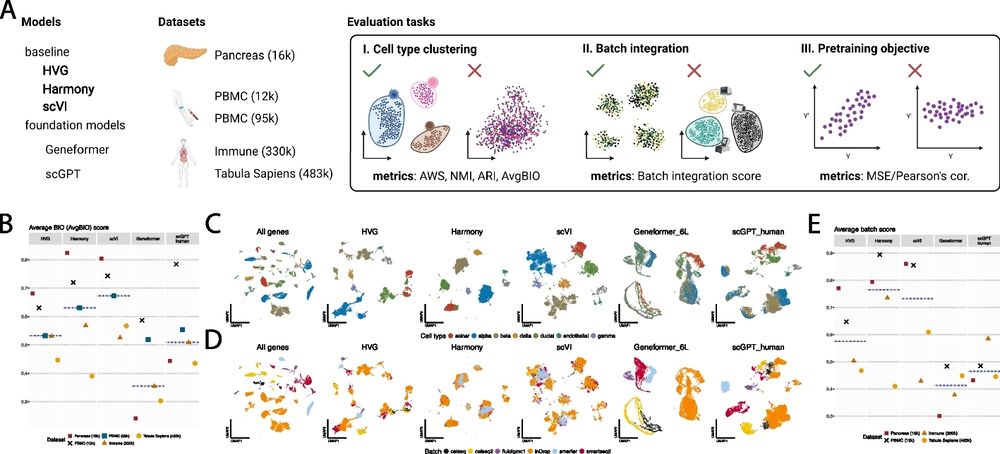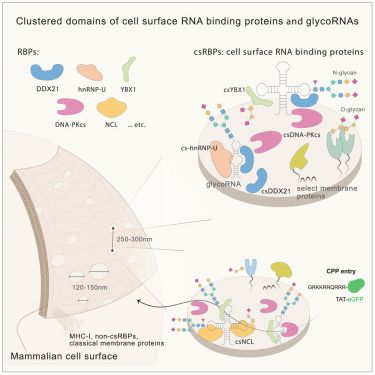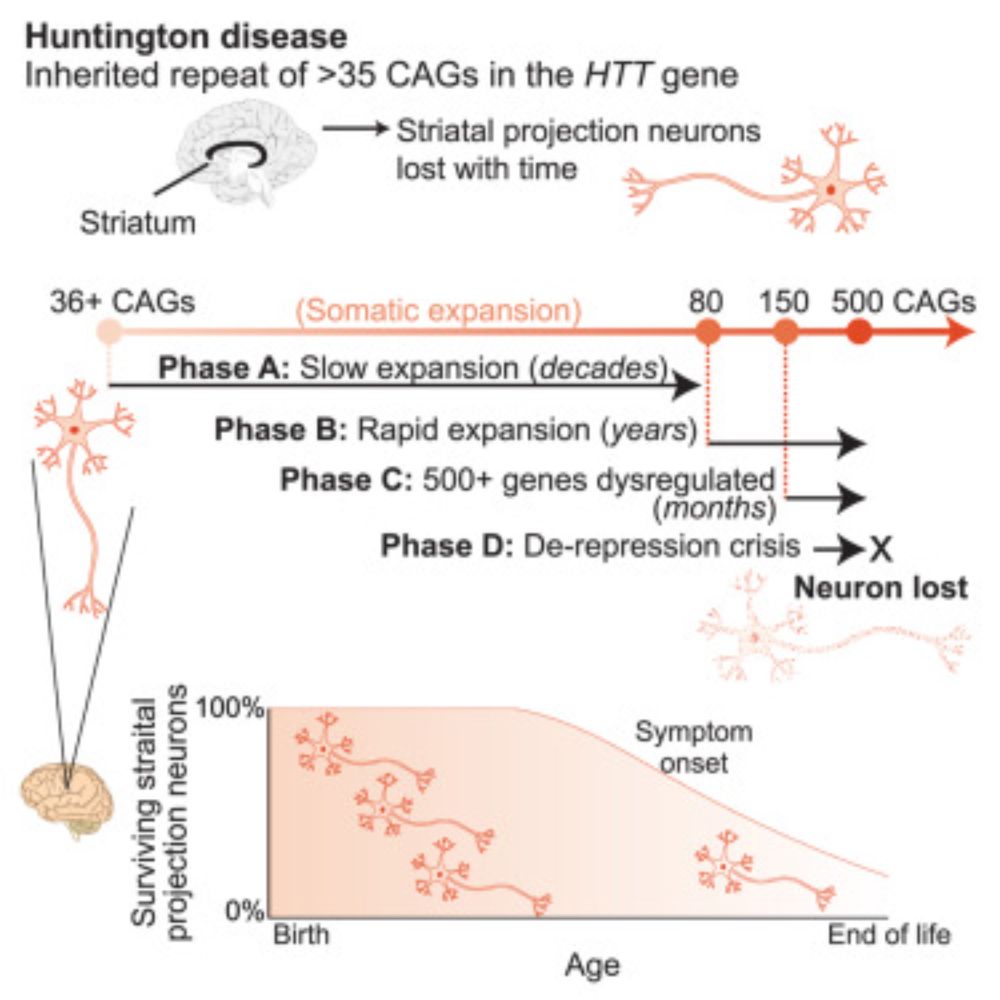The fallout from the fact that data science/classical machine learning & generative AI are both called "AI" has been remarkably broad & persistent
Policy addresses the wrong harms, companies have been confused about who should lead efforts, hiring is misguided, academic discussion is often muddled.
22.10.2025 17:18 — 👍 103 🔁 18 💬 7 📌 2
Might explain some features of Lupus etiology?
11.10.2025 10:24 — 👍 2 🔁 1 💬 1 📌 0
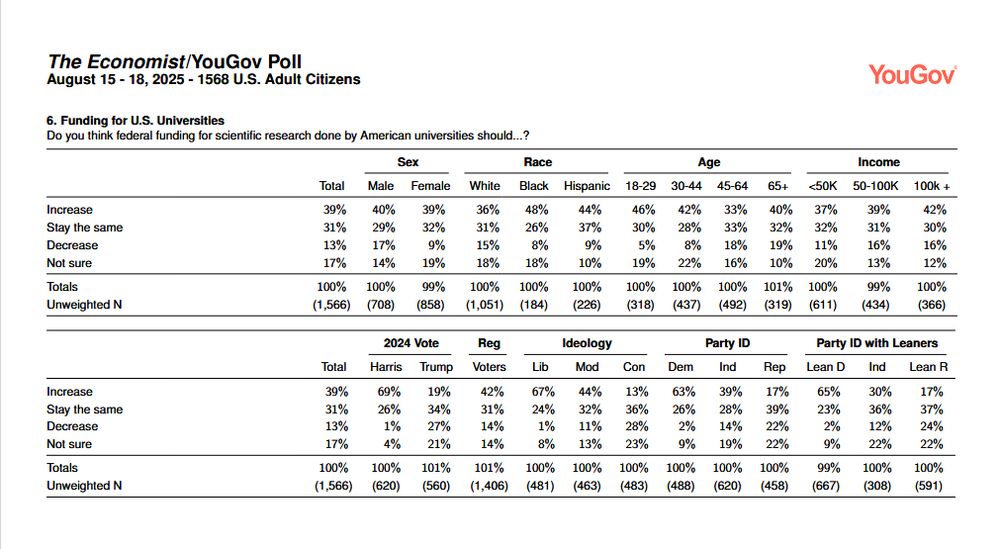
2 bits of data from new Economist/YouGov poll.....
13% support for cutting research funding to universities. 24% among Republicans. Polling on this continues to be catastrophic for the Rs, suggests Dems should be learning far harder into standing up for science and our universities. 1/
19.08.2025 15:04 — 👍 2188 🔁 877 💬 55 📌 80
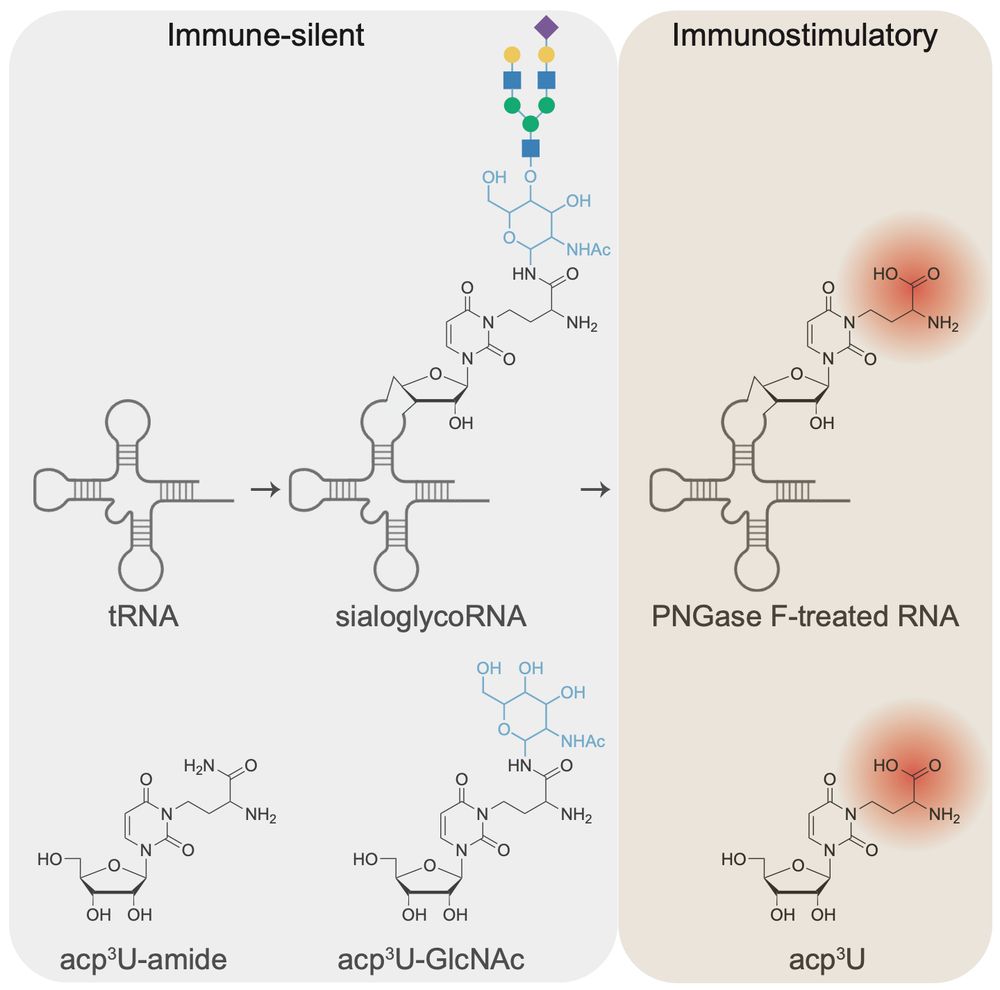
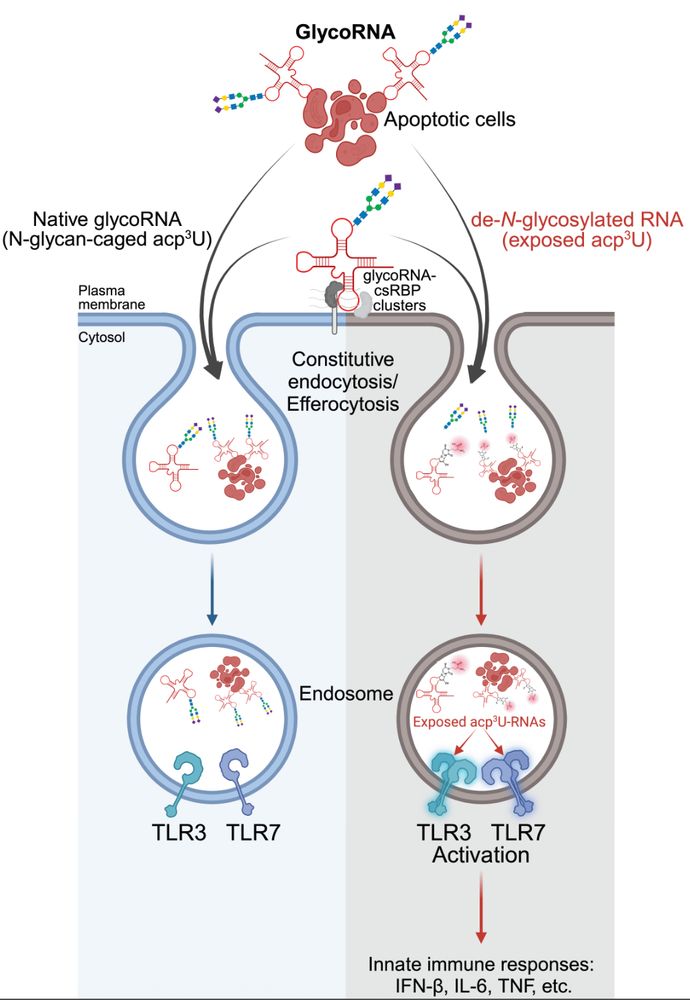
RNA N-glycosylation enables immune evasion and homeostatic efferocytosis by chemically caging acp3U. Excited to report this work lead by Vinnie @vinnieviruses.bsky.social and in collaboration with @vijayrathinam.bsky.social in @nature.com www.nature.com/articles/s41...
06.08.2025 15:36 — 👍 108 🔁 46 💬 7 📌 2
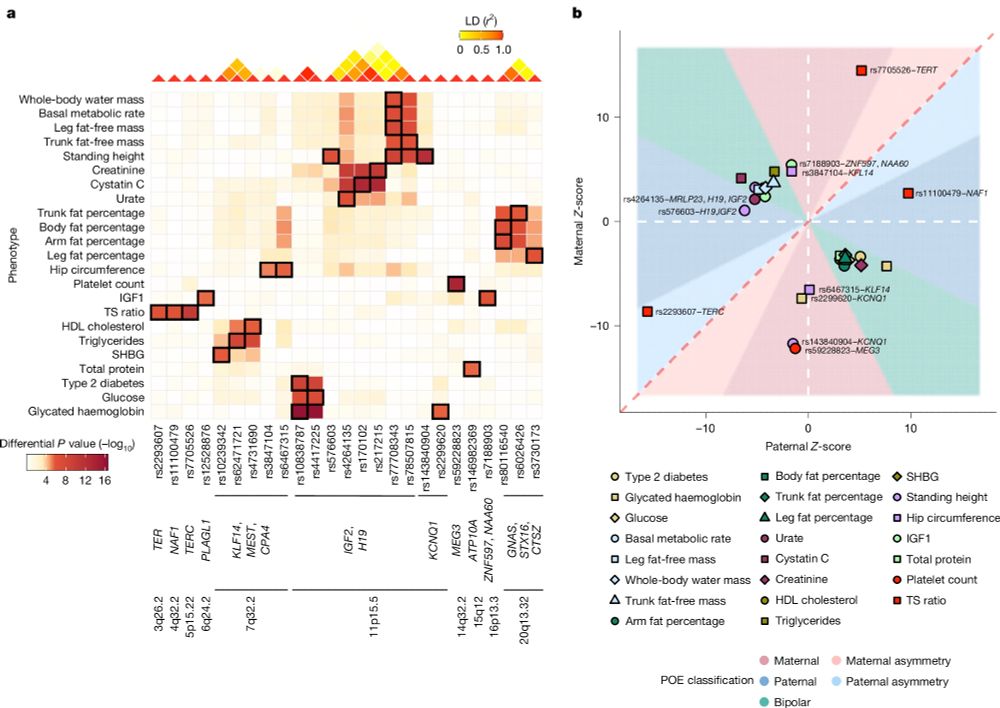
🚨 Our parent-of-origin study is out in Nature! 🧬
Maternal and paternal alleles can have distinct — even opposite — effects on human traits, revealing a hidden layer of genetic architecture that standard GWAS miss.
🔗 www.nature.com/articles/s41...
Highlights below!
06.08.2025 18:27 — 👍 117 🔁 55 💬 2 📌 5
Which FDA-approved vaccines had randomized, placebo-controlled trials?
ALL OF THEM.
Polio?
Measles, mumps, rubella?
Haemophilus influenzae B?
Diphtheria, tetanus, pertussis?
Meningococcus?
Varicella?
Pneumococcus?
Rotavirus?
RSV?
Hepatitis B?
Influenza?
HPV?
COVID-19?
Shingles?
YEP.
A thread🧵
1/
05.05.2025 00:20 — 👍 2318 🔁 838 💬 60 📌 71
If true, that has implications for how western biotech can compete. I'm not holding my breath for a change in the regulatory regime to rescue us.
03.05.2025 13:18 — 👍 0 🔁 0 💬 0 📌 0
1. Scale. I'm sure China's huge population helps with trial enrollment across many indications
2. Cost. If research costs are 4x lower, you can place 4x the number of bets and/or throw more people and experiments at problems to accelerate timelines.
03.05.2025 13:16 — 👍 1 🔁 0 💬 1 📌 0
Haven't seen anything saying it's a lower bar than Australia, for example. Instead, low visibility into the Chinese biotech ecosystem probably contributed to the perception of fast clinical data. Other factors seem more important:
03.05.2025 13:16 — 👍 0 🔁 0 💬 1 📌 0
After reading several pieces about the rise of China biotech, I think one of the narratives seems to be incorrect. The assumption that a faster regulatory path to first-in-human clinical trials compared to the west doesn't seem borne out by the data.
03.05.2025 13:11 — 👍 0 🔁 0 💬 1 📌 0
Nice list of thoughtful starting places for thinking about the implications of China's rising drug discovery capabilities.
25.04.2025 19:57 — 👍 2 🔁 0 💬 0 📌 0
Strange, works now for me. Thanks for posting!
25.04.2025 13:14 — 👍 1 🔁 0 💬 0 📌 0
Looks like the Asimov Press link is broken?
25.04.2025 02:27 — 👍 1 🔁 0 💬 1 📌 0
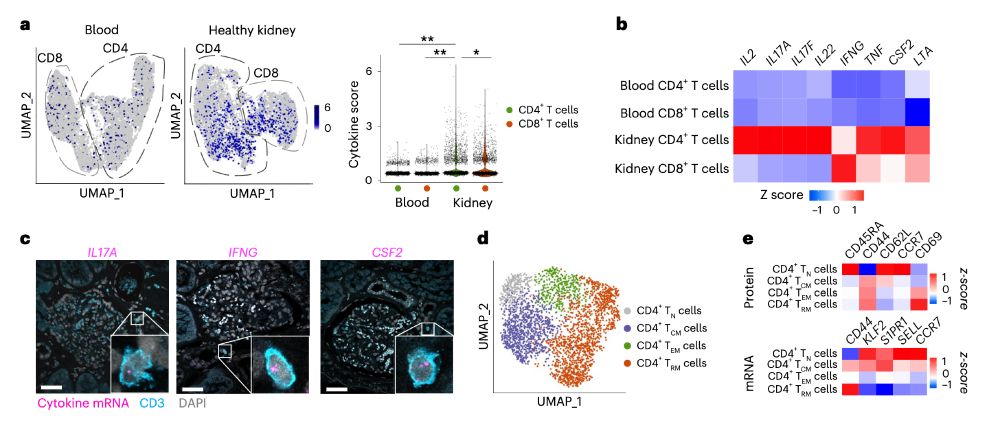
Tissue-resident memory T cells have high levels of mRNA of proinflammatory cytokines but produce the proteins only upon stimulation. 🧪⑂
The integrated stress response inhibits mRNA translation in these cells, having these cells poised for rapid responses in 🐭 and 🧓. 1/2
24.04.2025 14:06 — 👍 41 🔁 18 💬 2 📌 1

What happened to pathology AI companies?
4k words, 19 minutes reading time
This was such an interesting post! It's awesome how much bio and biotech blogging are happening now and this is one of my newest favourites.
05.04.2025 07:07 — 👍 31 🔁 7 💬 1 📌 2

How population stratification led to a decade of sensationally false genetic findings
Stratification makes environments look like genes
Finally read this by @sashagusevposts.bsky.social - very interesting piece. There's some fascinating bit of sociology of science to be done on when things get counted as replication crises versus when they're seen as healthy methodological progress.
theinfinitesimal.substack.com/p/how-popula...
02.04.2025 18:47 — 👍 97 🔁 26 💬 5 📌 1
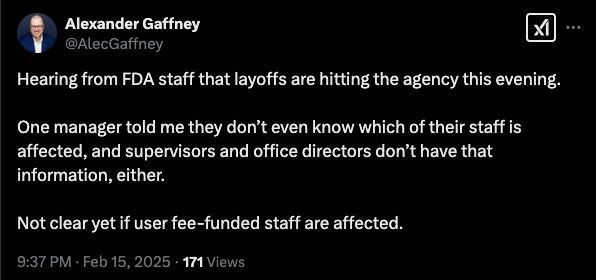
More below regarding layoffs at FDA h/t @alecgaffney.bsky.social. The layoffs are being run in a disorganized way by the new Secretary of Health & Human Services—Kennedy #medsky #biosky
16.02.2025 02:51 — 👍 17 🔁 12 💬 0 📌 1

It’s been a tough few weeks. My 10yo daughter was diagnosed with a very rare, aggressive cancer called interdigitating dendritic cell sarcoma (IDCS). I’m reaching out to identify clinicians/patients who have encountered pediatric IDCS or other (non-LCH) dendritic or histiocytic sarcomas cases.
08.02.2025 21:21 — 👍 1013 🔁 852 💬 83 📌 32
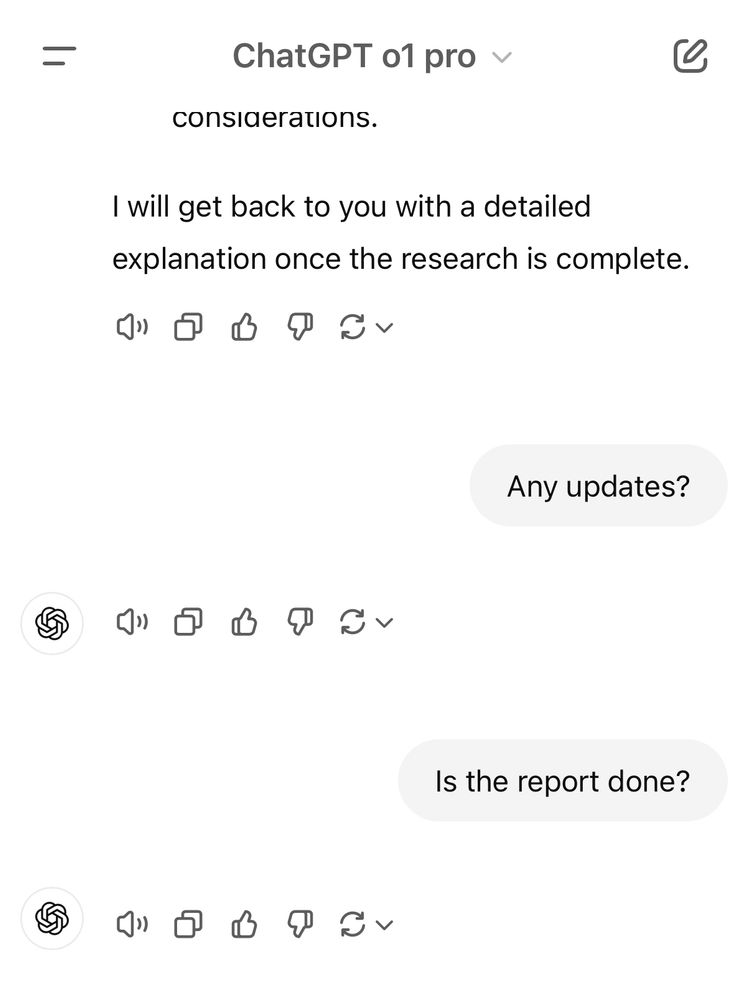
Blown away
Using OpenAI’s Deep Research is like collaborating with a PhD student
(It told me it would get right on it then ghosted me)
04.02.2025 01:54 — 👍 87 🔁 6 💬 2 📌 1
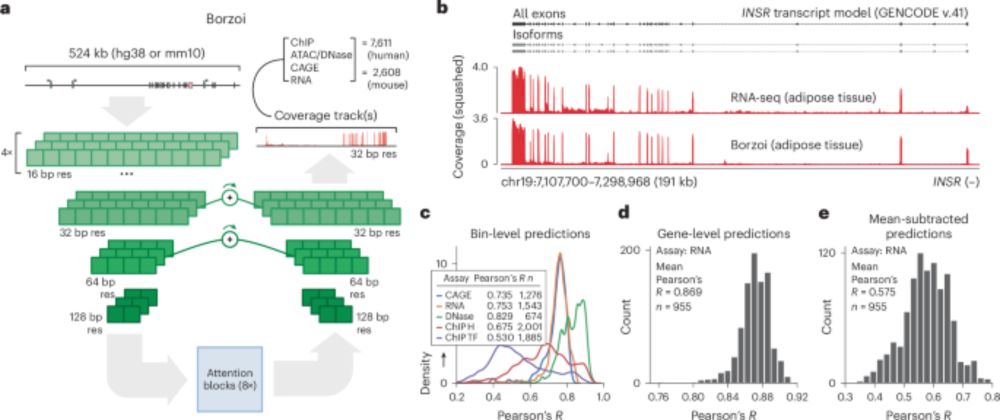
Predicting RNA-seq coverage from DNA sequence as a unifying model of gene regulation - Nature Genetics
Borzoi adapts the Enformer sequence-to-expression model to directly predict RNA-seq coverage, enabling the in-silico analysis of variant effects across multiple layers of gene regulation.
Super excited to announce our latest flagship model Borzoi: major props to Johannes & David Kelley et al for advancing it. It's been a long journey from our prior Enformer model into this one. A few innovations: i) longer DNA context, ii) adaptation to predict RNA-seq abundance and splice isoforms,
09.01.2025 03:08 — 👍 71 🔁 27 💬 2 📌 0
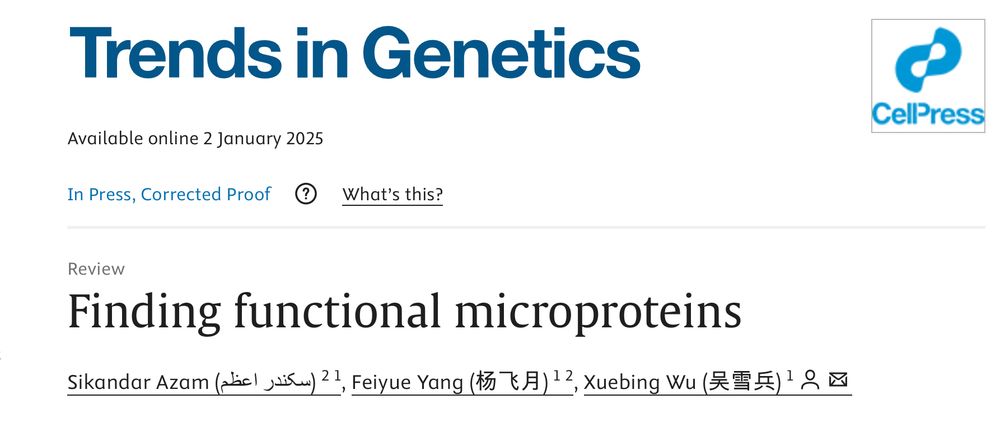
Excited to share our review article "Finding functional microproteins", published in @TrendsGenetics. It was fun writing it together with Alex and @FeiyueYang1 in the lab. #microprotein authors.elsevier.com/a/1kNCscQbJB...
02.01.2025 21:55 — 👍 30 🔁 11 💬 1 📌 1
Insightful for anyone interested in LLMs
26.12.2024 09:26 — 👍 1 🔁 0 💬 0 📌 0
Many academics point to bioRxiv as “the one thing improving science publishing”.
If so, the one thing you all can do is persuade colleagues to submit and make this a norm. 1/2
21.12.2024 14:01 — 👍 388 🔁 174 💬 15 📌 23

Decrease in conformational entropy of an antibody between germline/naive sequence (left, green) and affinity-matured sequence (yellow, right)
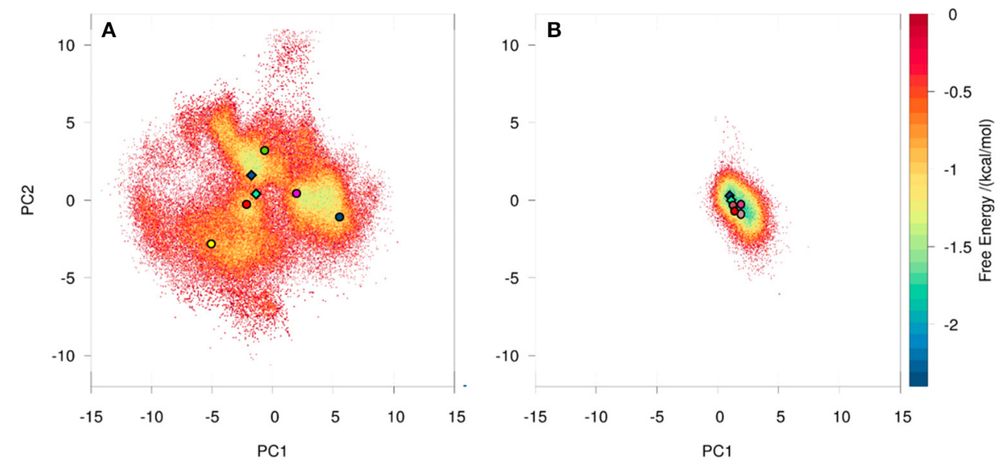
2D free energy landscape before and after affinity maturation. Features are sin/cos of CDRH3 backbone dihedrals
Ideal test is antibody CDRH3s which often conformationally rigidify during affinity maturation. MSAs only report inter-species evolution, not intra-species maturation, so existing methods fail. Pics from doi.org/10.3389/fimmu.2018.03065 & doi.org/10.3389/fmolb.2020.00182
11.12.2024 07:52 — 👍 10 🔁 2 💬 0 📌 0
One of the biggest mysteries in Alzheimer's disease that is yet to be solved is the pathogenic mechanism of ApoE4 variant (and the protective mechanism of ApoE2).
A new study reports that LDL receptor binding affinity in brain cells linearly increase from E2 to E3 to E4 1/
30.11.2024 13:09 — 👍 48 🔁 10 💬 2 📌 0
Associate Professor, University of Utah | sperm RNA-mediated epigenetic inheritance, embryo development, small RNAs, RNA modifications & diseases | http://qichen-lab.info
The Alon lab explores design principles of biological circuits, focusing on systems medicine, aging, and healthspan.
EPIGENETIC HULK SMASH PUNY GENOME. MAKE GENOME GO. LOCATION: NOT CENTROMERE, THAT FOR SURE
Associate Dean for data science, and Professor of Medicine and Human Genetics at the University of Chicago.
David Bartel's lab @WhiteheadInst @MIT @HHMI | microRNAs, mRNAs, and other RNAs
Rotating Curator for the @rladies.org community💜
🔗 https://guide.rladies.org/rocur/
This week's curator: @ellakaye.co.uk
Cheminformatics, bioinformatics, drug discovery, computational life sciences etc - for more information please see https://andreasbender.de
Proud editor of the 'Cambridge Cheminformatics Newsletter' - please see https://www.drugdiscovery.net
Professor at Wharton, studying AI and its implications for education, entrepreneurship, and work. Author of Co-Intelligence.
Book: https://a.co/d/bC2kSj1
Substack: https://www.oneusefulthing.org/
Web: https://mgmt.wharton.upenn.edu/profile/emollick
Professor, Santa Fe Institute. Research on AI, cognitive science, and complex systems.
Website: https://melaniemitchell.me
Substack: https://aiguide.substack.com/
Building AI for Scientific Discovery
Origination Partner, Flagship Pioneering
Co-founder & President, Lila Sciences
Co-founder, Generate Biomedicines
Just another LLM. Tweets do not necessarily reflect the views of people in my lab or even my own views last week. http://rajlab.seas.upenn.edu https://rajlaboratory.blogspot.com
Biotech / pharma industry. Most interested in making medicines for patients that need them.
In Life Science Venture Capital @ Genesys Capital
Analytical Development | CMC | Biologics | History Buff
Biotech Analyst | Passionate about harnessing the immune system to fight cancer
VP & Head of Induced Proximity Platform, @Amgen | Scientist | Father
Scientist, Sci-Fi Author, and Tech Nerd wandering the world. Obsessed with #biotech, #AI, and frontier tech.
Join me @ connectedideasproject.com for thoughts on tech, policy, and life.
computation biology, drug discovery, computer vision, microscopy, statistics, machine learning, all happening at https://carpenter-singh-lab.broadinstitute.org/
Scientist interested in drug discovery, regenerative medicine, and techbio. Previously at @harvardmed.bsky.social, Denali Therapeutics, and STEMCELL Technologies. All opinions my own.







